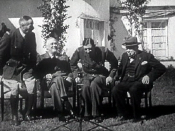Running head: THE FRENCH RESISTANCE OF WORLD WAR II 1
The French Resistance of World War II
In June of 1940, the surrender of France was a shattering of pride for many of the French people. Much of France had believed the government had let them down. Seeing a Nazi approved government, too much of France, confirmed their beliefs that politicians had them fall as a result. The French Resistance Movement was in turn established. The resistance movement was created on morals of rebelling for the greater good of France and all Jews.
Following the surrender in June of 1940, France was brought into a wave of shock. The public was being fed that the French army was more than capable of defending against an attack from the German troops. Vichy France, a non-occupied region of France, was governed by Marshall Petain and set up by the German troops. The Vichy regime established in France in July 1940, led by Marshall Petain, is the most famous example of official collaboration, but the governments of Denmark, the Low Countries, Norway, Hungary, Yugoslavia and Greece all signed alliances with the Third Reich.
In most cases, these pacts were signed after German military occupation. In some (such as Austria, where there was large public and political support for the Nazis), they had more to do with ideological affinity than coercion. Collaboration in its most extreme form resulted in the handing over of thousands of Jews to the Nazis by collaborationist administrations. In France alone, the Vichy authorities deported 76,000 Jews to camps including Auschwitz. The issue of collaboration was not always clear cut however. In Denmark, the government accepted certain Nazi demands, such as arresting Communists, but refused others, including passing laws against their Jewish community (Partisan, 1940). Petain had high reputation in...


